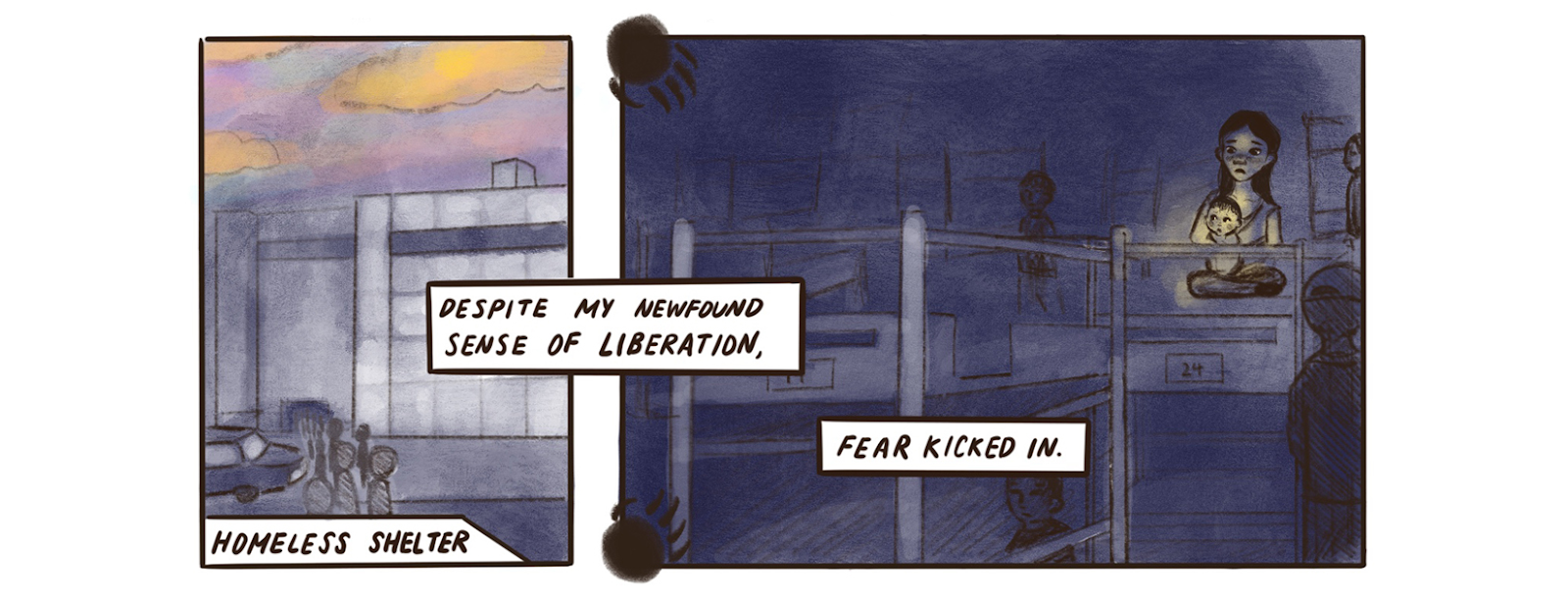A Few of the Comics from Changing the Narrative
The first thing I notice about the comics on display at Changing The Narrative is the colors. It sounds odd, comics are well known for featuring stories of colorful characters, and often times I'm taken away by the reprinted comics of the fifties and sixties, with their primary colors seeming to pop off the page. It's not as realistic as it is in modern comics but it's got a certain appeal to me. Those old comics had a lot less color back then and they had to attract kids' attention. Modern comics aren't black and white but with so many colors and new shading techniques, it's easy for them to blur together on the rack of your local comic shop.
Changing the Narratives comics seem to have color with a very strict purpose that immediately gets my attention. There are some black and white comics of course, that look like they were drawn in sharpie. I like these ones too, it gives them a personal look. Like the artist drew this in their notebook between classes or can go in the opposite direction and feel like noir style tragedy. Some of these black and white comics end with a bright colorful scene that lightens my soul a little. I know these stories shouldn't be about resilience but I don't believe overwhelming despair motivates people to action.
Another comic is almost split in half between warm colors and dark ones like the comic is in permanent sunrise. The dark parts illustrate moments of fear and insecurity while the warmer moments imply moments of relief and joy. It's sad in a beautiful sort of way, or maybe vice versa. A lot of the comics have that vibe to them.
One comic that gets my attention is Street Lights, the people are in color for that one, the city and background are mostly whites and greys. The narrator tells the story of the people they lost while homeless, I don't think their death was ever described, funerals sure, but the point of the comic was to honor their lives. Street Lights ends with the author ascribing a kind of honored ancestor status to these people who have no genetic relations. As they say "I feel my ancestors with me, Some are people related to me and some are these folks."
I wasn't taught to really honor my ancestors, nor was ever really told to expand my definition. Honestly not all my ancestors are worthy of honor, my family's been in America for quite a while and I have the luxury to know some of their crimes. Still, after reading the comic I briefly take a minute to silently thank the ancestors that do deserve honoring, and then after some thinking, I do the same to ancestors who aren't related to me.
To end my journey, I take another look at "Strings Attached" by Erica Grier, She did a whole interview with Street Roots. Like most of the comics the story isn't hers, most of the narrators chose to remain anonymous, but the art is all hers. Grier describes her art as Folk Surrealism. To me, it looks like a wonderful mix of ancient 2D art, with pharaohs and greek heroes running across stone surfaces and clay pots. Grier explains in her street roots interview that the colors were done with Gouache, which is what a lot of manuscripts from the middle ages and some Hindu devotional art uses. Grier specifically uses a lot of light green and red for her piece.
In less than ten comics I feel pretty moved in ways that I don't think other art displays have. I feel the heart and soul put into these pieces and it's given me a lot of complex emotions that I'm not sure I have words for.
https://www.streetroots.org/news/2022/01/05/comics-erika-rier
https://www.pdx.edu/homelessness/StudentStories
Cameron Grow



Comments
Post a Comment